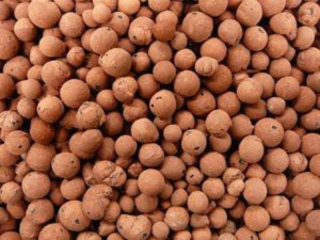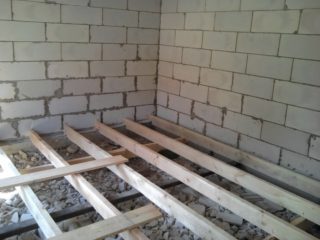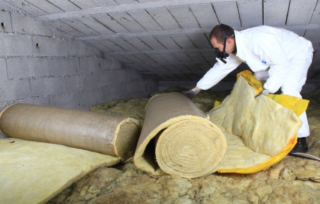Fuel consumption is reduced if the insulation of the bath from the foam blocks from the inside is correctly performed and the goal of heat conservation is achieved. The complex process of protection against the cold is carried out differently for the steam room and the relaxation room. Significant heat loss reduces the service life of the building, provokes the development of moisture, contributes to the appearance of an unpleasant odor.
Justification for the use of foam blocks to insulate the bath inside
Foam concrete blocks belong to the group of materials that retain internal heat, but freeze at low temperatures, so visitors to the bathhouse feel discomfort. The material is hygroscopic and absorbs moisture. It is necessary to insulate the bath from the block inside by technology, because the process has its own characteristics.
Comprehensive thermal insulation includes protection against moisture and steam. The protective layer is mounted inside and out, preventing wet concrete. Foam blocks choose brands M25, the density of the material should be D700.
Features of different materials for insulation
The rooms of the bath are divided into types depending on the internal microclimate. The washing room, the steam room and the combustion chamber have high humidity and temperature, and the usual conditions in the relaxation room and dressing room.
For the premises of the bath insulation is used:
- jute felt;
- mineral wool;
- expanded clay;
- Styrofoam.
Materials are intended for different rooms, as differ in properties and characteristics. When choosing, the hydrophobicity of the insulation and the ability to liberate harmful substances during heating are important.
Jute felt
In production, natural fiber of the same plant is used. Natural resins protect the threads from decay, the material is durable, environmentally friendly, uniform density in the mass. For bonding, polyester fibers are used, which give elasticity.
The peculiarity of jute is that during heat it does not release toxic substances into the surrounding space. It requires a film of vapor and waterproofing, because the fibers get wet when in contact with moisture.
Mineral wool
For the manufacture of rocks, glass, waste blast furnace, which are melted in high-temperature chambers and form fibers.
There are types of mineral wool:
- glass wool;
- stone wool;
- slaggy.
Glass wool absorbs less moisture than the other two types, but is also used in bath rooms in combination with steam protection. Minvata steadily reacts to the action of chemicals, in case of fire forms a barrier to the spread of flame. Wetting reduces heat-shielding properties.
Expanded clay
Porous insulation is made from shale as a result of firing. Subsequent processing yields a material of different bulk density. Expanded clay can weigh from 150 to 850 kg / m3.
Environmentally friendly insulation is divided depending on the shape and size:
- crushed stone;
- gravel;
- sand.
The first two varieties have a large, medium and small fraction. Sand and small-sized elements are not used to warm the bath from the cinder block from the inside, because Due to the high density in the mass, it conducts internal energy faster. Large and medium granules are used, which require the installation of a special frame, where the material is filled.
Styrofoam
The material belongs to the group of foamed polymers. A large volume in the mass is occupied by gas, so the structure contains insulated balls glued in the production process.The heat-insulating properties are due to the low conductivity of the internal elements.
Polyfoam is well suited for insulating a bath from inside the blocks with your own hands, because easily mounted on walls and does not require a frame. The material is inexpensive, while it turns out effective insulation from the cold. Polyfoam does not absorb moisture well and retains properties for a long time.
Siding application
Finishing elements reliably serve in the room of a bathhouse in a complex with a heater. The panels are available in different colors and textures, so they copy different natural materials, such as brick, wood, stone.
Microbes, harmful microorganisms do not breed on the siding plane, rodents do not spoil the finish. The panels are suitable for finishing the wall surface after insulation from the inside of a brick bath or a building made of foam block, wood.
Features of the technological process
Insulators have low thermal conductivity, which is maintained through the use of vapor barrier and moisture protective films. Before work, you need to study the step-by-step instructions for warming the inside with your own hands of a brick bath or sauna from foam concrete blocks.
Insulation of walls only will not give a result, because energy goes through the walls and ceiling of the steam room. Horizontal and vertical structures are insulated according to the rules in order to reduce fuel consumption and lower heating costs.
Floor insulation
More commonly used foam or extruded polystyrene foam. The ground under the floor is dug up to a depth of 40-50 cm from the level of the clean floor, then a layer of sand and gravel bedding is poured to a height of 20-25 cm. A screed of cement and sand is made on the pillow or a spill is made with cement milk to hold the components together.
Waterproofing consists of a triple coating layer of bitumen or 3 layers of roofing material are laid on the mastic. After that, a heater is placed, which is protected by a vapor barrier membrane and a waterproofing film. A cement-sand screed is carried out, on top of which a final floor covering is made.
Vapor barrier walls
More often, a plastic film is used to protect against moist air, but there are other materials that are effective.
Depending on the type of premises used:
- foil insulation is placed in the steam room, which additionally reflects infrared waves;
- foil or cellophane, kraft paper with a moisture-resistant interlayer and lavsan coating are mounted in the shower;
- lounge and vestibule are finished with simple kraft paper, membrane insulators, glassine.
In the steam room, flexible foamed plastic with a foil coating on one or two sides works well. The material can simultaneously get rid of moisture and properly insulate the bath from the inside of the foam blocks, if you select the thickness in accordance with the calculation.
Ceiling insulation
To fix the insulation to the ceiling, a frame of their wooden battens or a metal profile is made, which supports the layer. Elements are placed with an interval of 50 cm.
At the bottom of the material is vapor and waterproofing so that the film does not come in contact with the insulation. Condensation forms on the moisture-proof membrane, which is transferred to heat protection and reduces its properties. Ceiling finish mounted on the frame.
Attic insulation
If the bathhouse is built with a technical upper floor, it is insulated over the cover, walls and ramps.
For the horizontal layer, the following materials are used:
- slag;
- expanded clay;
- felt;
- Styrofoam.
The insulation of walls and ceiling in the attic is done according to the insulation scheme of similar surfaces in the bathhouse.









